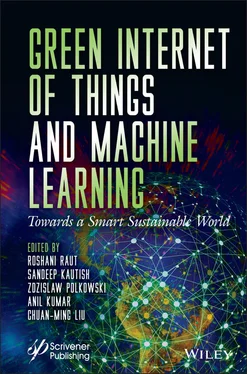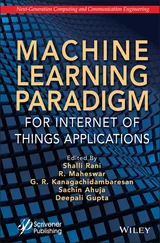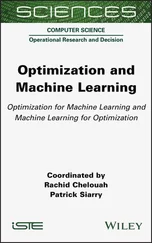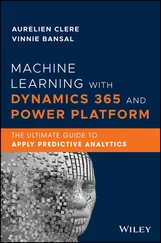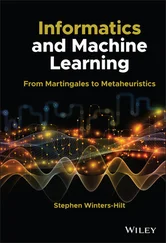Green Internet of Things and Machine Learning
Здесь есть возможность читать онлайн «Green Internet of Things and Machine Learning» — ознакомительный отрывок электронной книги совершенно бесплатно, а после прочтения отрывка купить полную версию. В некоторых случаях можно слушать аудио, скачать через торрент в формате fb2 и присутствует краткое содержание. Жанр: unrecognised, на английском языке. Описание произведения, (предисловие) а так же отзывы посетителей доступны на портале библиотеки ЛибКат.
- Название:Green Internet of Things and Machine Learning
- Автор:
- Жанр:
- Год:неизвестен
- ISBN:нет данных
- Рейтинг книги:3 / 5. Голосов: 1
-
Избранное:Добавить в избранное
- Отзывы:
-
Ваша оценка:
- 60
- 1
- 2
- 3
- 4
- 5
Green Internet of Things and Machine Learning: краткое содержание, описание и аннотация
Предлагаем к чтению аннотацию, описание, краткое содержание или предисловие (зависит от того, что написал сам автор книги «Green Internet of Things and Machine Learning»). Если вы не нашли необходимую информацию о книге — напишите в комментариях, мы постараемся отыскать её.
Encapsulates different case studies where green-IOT and machine learning can be used for making significant progress towards improvising the quality of life and sustainable environment. Green Internet of Things and Machine Learning
Green Internet of Things and Machine Learning — читать онлайн ознакомительный отрывок
Ниже представлен текст книги, разбитый по страницам. Система сохранения места последней прочитанной страницы, позволяет с удобством читать онлайн бесплатно книгу «Green Internet of Things and Machine Learning», без необходимости каждый раз заново искать на чём Вы остановились. Поставьте закладку, и сможете в любой момент перейти на страницу, на которой закончили чтение.
Интервал:
Закладка:
Library of Congress Cataloging-in-Publication Data
ISBN 978-1-119-79203-1
Cover image: Pixabay.Com
Cover design by Russell Richardson
Set in size of 11pt and Minion Pro by Manila Typesetting Company, Makati, Philippines
Printed in the USA
10 9 8 7 6 5 4 3 2 1
Preface
The Internet of Things (IoT) is an evolving idea which is responsible for connecting billions of devices that acquire, perceive, and communicate data from their surroundings. Because this transmission of data uses significant energy, improving energy efficiency in IOT devices is a significant topic for research. The green internet of things (G-IoT) makes it possible for IoT devices to use less energy since intelligent processing and analysis are fundamental to constructing smart IOT applications with large data sets. Machine learning (ML) algorithms that can predict sustainable energy consumption can be used to prepare guidelines to make IoT device implementation easier.
The G-IoT, an updated version of the IoT, is applied for different applications to improve energy efficiency. Therefore, the material collected in this book has been edited to enhance the reader’s knowledge about the current research achievements and challenges in the area of G-IoT and ML applications. The book targets senior and junior engineers, undergraduate and postgraduate students, researchers, and anyone else interested in the trends, developments, and opportunities afforded by the G-IoT and ML concepts.
Although it was impossible to include all current aspects of the research in the targeted area in the twelve chapters of this book, it will be a useful tool in terms of the various possible methodologies that can provide G-IoT applications through the use of ML. A brief description of the various application fields and methodologies covered in each chapter follows:
– Chapter 1provides a brief introduction to various artificial intelligence (AI), ML, and IoT-based approaches with their real-life applications. It encompasses the many aspects of the G-IoT based on IoT device use and presents an outline of how each web search engine, such as Bing or Google, is used to search the internet, as they employ strategies such as learning algorithms to rank the websites. For example, every time Facebook is used to identify the photo of friends, online fraud detection, online customer assistance, video surveillance, face recognition, email spam, and malware are based on various learning algorithms.
– Chapter 2presents an AI equipment design that focuses on IoT applications. The design is established on the standard of learning automata, characterized by utilizing propositional logic. The reasoning-based support empowers low-vitality impressions just as high learning accuracy throughout is used for preparing and surmising, which are vital criteria for competent AI with a long working life. Methodical encoding of the input information into optimally equal reasoning blocks is essential to this circuit. The distribution of these squares is improved through a plan investigation and robotization stream utilizing field programmable entryway exhibit-based quick models and programming recreations. The plan stream considers an assisted hyperparameter search for matching the clashing demands of economy and high accuracy. Broad approvals of the equipment execution of the new engineering employing single- and multiclass AI datasets reveal potential for fundamentally reduced vitality compared to the current AI equipment structures.
– Chapter 3focuses on the IoT as a technology that connects everything to the smart world. To develop a practical smart scenario, this chapter explores numerous technologies along with the difficulties involved in fulfilling the goal of a G-IoT. Since energy-efficient communication in large-scale IoT devices has become a key concern in recent years, there is a fundamental need in such networks to minimize overall battery-powered device power consumption to reduce data transmission costs and lengthen network life. This study requires a scalable and energy-efficient approach for G-IoT heterogeneous nodes. These nodes need to create energyefficient power conservation mechanisms to provide a longlived network.
– Chapter 4discusses the role of ML and the G-IoT in agriculture. Machine learning and its various application domains are explained and extensively covered in the first part of the chapter. In agricultural and farming applications, there are pros and cons to using the IoT to preserve biodiversity and reduce greenhouse gas emissions. To minimize the drawbacks, the smart food and agricultural enterprises built using G-IoT and green nanotechnology are discussed. Furthermore, how the IoT and G-IoT empower agriculture with accurate and sustainable farming approaches is also discussed.
– Chapter 5demonstrates the use of analytics and machine learning to improve crop data. For optimal crop growth, pH, water content, and humidity are key. Inadequate inputs might lead to a growth imbalance in crops. Machine learning approaches can profit from prediction and classification challenges. To monitor the health of crops in the field, CIoT (Crop Internet of Things) was mostly required to assist in humidity, soil pH, soil wetness, soil type, and crop quality monitoring. Various sensors, like humidity sensors, pH sensors, soil quality sensors, and temperature sensors, can be utilized to detect crop yield and ML algorithms to calculate yields alongside descriptive analytics. Decisions on types of pesticides to use and the nutritional requirements of individual crops can be made with ML algorithms. Farmers would benefit from the early use of ML for soil mapping to produce a better environment for future crops.
– Chapter 6explores smart farming using deep learning (DL) techniques. In the modern world, trending automation techniques are mixed with traditional farming approaches. A variety of crops are cultivated in various seasons from farmland. Farmers face several obstacles such as climatic calamities, pests, seed quality, soil quality, etc. Therefore, DL technologies are being used to turn traditional farming into smart farming.
– Chapter 7presents the use of G-IoT and ML for agriculture applications. The IoT is a network of diverse sensors, software, and other technologies embedded in a system that retains flexibility. This design combines many sensors and software to perform multiple functions simultaneously. Artificial neural networks, C-means, K-means, Bayesian model and so on are used to make cost-effective, low-power IoT devices. Approaches like green computing, green wireless sensor networks, etc., create a difference in criteria for energy consumption.
– Chapter 8presents an IoT-enabled AI-based model to assess land suitability for crop production. It briefly covers the IoT sensors used in horticulture and presents a summary of ML, AI, and DL techniques for farmers. Current challenges in the field of agribusiness are shown with the evaluation of the study. The review reveals that explicit model assessment is supported by a wholly automated approach.
– Chapter 9introduces green cloud computing (GCC) and G-IoT applications for agriculture and healthcare systems. In this chapter, the technology and issues relating to GCC and G-IoT, as well as the ability to minimize energy usage through the combination of these two approaches, are discussed. The green information and communication technologies (GICTs) that facilitate the G-IoT are extensively discussed. Additionally, the possibilities of a healthcare and G-IoT application system using a digital wireless sensor cloud with discrete integration or digital summation modeling are presented.
– Chapter 10discusses how the G-IoT can be used for smart transportation. This is a global technical necessity since building an energy-efficient IoT ecosystem reduces CO2 emissions from sensors, devices, and services that are implemented in IoT applications. The IoT is used in smart transportation (cars, trains, buses, etc.) to provide an effective way to avoid more energy use. This chapter looks at the G-IoT, along with its various challenges and issues, and the various technologies utilized in it.
Читать дальшеИнтервал:
Закладка:
Похожие книги на «Green Internet of Things and Machine Learning»
Представляем Вашему вниманию похожие книги на «Green Internet of Things and Machine Learning» списком для выбора. Мы отобрали схожую по названию и смыслу литературу в надежде предоставить читателям больше вариантов отыскать новые, интересные, ещё непрочитанные произведения.
Обсуждение, отзывы о книге «Green Internet of Things and Machine Learning» и просто собственные мнения читателей. Оставьте ваши комментарии, напишите, что Вы думаете о произведении, его смысле или главных героях. Укажите что конкретно понравилось, а что нет, и почему Вы так считаете.
